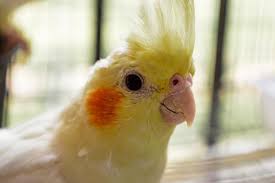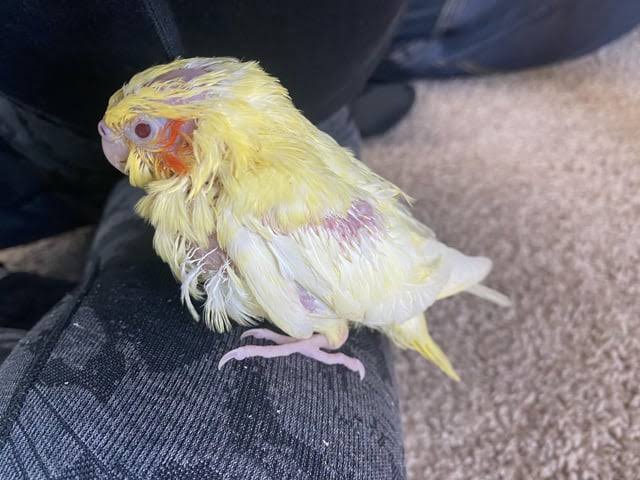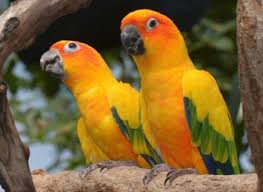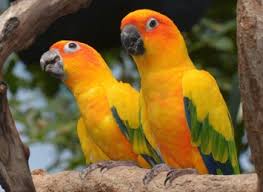Chlamydiosis, scientifically known as Chlamydia psittaci, is an infectious disease that affects birds and, less commonly, humans. This condition is caused by the bacterium Chlamydia psittaci, and it primarily manifests in birds, especially parrots, pigeons, and other avian species. However, humans can also contract Chlamydiosis through close contact with infected birds or their droppings.
In birds, Chlamydia psittaci can lead to respiratory issues, eye infections, and digestive problems. Birds infected with Chlamydiosis may exhibit signs such as lethargy, nasal discharge, and changes in droppings. The disease can spread easily among birds, making it essential for bird owners and handlers to be vigilant in monitoring their feathered companions for any signs of illness.
In humans, Chlamydiosis can result from exposure to infected birds, their feathers, or contaminated environments. Individuals who work closely with birds, such as pet owners, veterinarians, and bird breeders, are at a higher risk of contracting the disease. Symptoms in humans may include fever, headache, and respiratory problems. In severe cases, Chlamydiosis can lead to pneumonia and other complications.
Preventing the spread of Chlamydiosis requires maintaining good hygiene practices, especially when handling birds or cleaning their cages. Regular veterinary check-ups for pet birds and prompt treatment of any signs of illness are crucial in preventing the spread of the disease within avian populations.
Treatment for Chlamydiosis typically involves the use of antibiotics, and both birds and humans should complete the prescribed course to ensure the complete elimination of the bacterium. Additionally, strict quarantine measures may be necessary to prevent the further spread of the disease in both avian and human populations.
However, Chlamydiosis is a bacterial infection caused by Chlamydia psittaci, primarily affecting birds but also posing a risk to humans. Vigilance, good hygiene practices, and prompt veterinary care are essential in preventing and managing the spread of this infectious disease within avian communities and safeguarding the health of both birds and humans alike.
Read Also: The Reproductive Rate of Sheep and Goat
Animals Affected by Chlamydiosis (Chlamydia psittaci)

Chlamydiosis can impact a variety of avian species, with birds being the primary target of this infectious disease. Commonly affected animals include:
1. Parrots: Parrots, such as cockatiels, lovebirds, and macaws, are particularly susceptible to Chlamydiosis. These birds often live in close proximity to humans as pets, making them more likely to contract the infection.
2. Pigeons: Wild and domestic pigeons are also known carriers of Chlamydia psittaci. Given their close interaction with urban environments, pigeons can pose a risk of transmitting the disease to humans.
3. Canaries: These popular songbirds can be affected by Chlamydiosis, leading to respiratory issues and other health problems.
4. Finches: Finches, known for their vibrant plumage and melodious songs, are susceptible to Chlamydiosis. Owners of finches should be attentive to any signs of illness in their birds.
5. Cockatoos: These social and intelligent birds can contract Chlamydiosis, and symptoms may include respiratory distress and changes in behavior.
6. Hawks and Falcons: Birds of prey are not exempt from Chlamydiosis, and infection can affect their respiratory systems, potentially impacting their hunting abilities.
7. Other Avian Species: Various other birds, both wild and domestic, can be carriers or victims of Chlamydiosis. Wild bird populations can act as reservoirs for the bacterium, contributing to its transmission.
It is crucial for bird owners, veterinarians, and those working with birds to be aware of the potential risks associated with Chlamydiosis. Regular health check-ups, proper hygiene practices, and responsible handling of birds can help prevent the spread of this infectious disease among avian populations.
Additionally, measures should be taken to protect human health, as Chlamydiosis can be transmitted from birds to humans, emphasizing the importance of awareness and preventive measures in both avian and human communities.
Damages Caused by Chlamydiosis

Chlamydiosis can inflict various damages on both avian and human hosts. The impact of the disease varies depending on the species affected. Here are the key damages caused by Chlamydiosis:
1. Respiratory Issues: In birds, Chlamydiosis often leads to respiratory problems such as coughing, sneezing, and difficulty breathing. These issues can be severe and may result in long-term damage to the respiratory system.
2. Digestive Problems: Birds infected with Chlamydia psittaci may experience gastrointestinal issues, including diarrhea and changes in the consistency of their droppings. Prolonged digestive problems can lead to malnutrition and weakness.
3. Reproductive Complications: Chlamydiosis can affect the reproductive organs of birds, leading to decreased fertility and hatching problems. In some cases, infected birds may exhibit reduced egg production or even reproductive failure.
4. Ocular Infections: Eye infections are common in birds suffering from Chlamydiosis. Symptoms may include redness, swelling, and discharge. If left untreated, these infections can result in permanent damage to the eyes.
5. Spread in Avian Communities: Chlamydiosis has the potential to spread rapidly among bird populations, especially in environments where birds are kept in close quarters. This can lead to widespread illness, impacting entire aviaries or flocks.
6. Zoonotic Transmission to Humans: One of the significant concerns associated with Chlamydiosis is its ability to transmit from birds to humans. In humans, the disease can cause flu-like symptoms, pneumonia, and, in severe cases, lead to long-term respiratory complications.
7. Economic Impact: For those involved in bird breeding, Chlamydiosis can result in economic losses due to reduced fertility rates, increased mortality, and the need for costly treatments and quarantine measures.
8. Impact on Wildlife: Wild bird populations can also suffer from Chlamydiosis, affecting the ecological balance in their natural habitats. This may lead to declines in bird populations and disrupt ecosystems.
Chlamydiosis poses a range of damages to avian and human health, impacting respiratory, digestive, and reproductive systems in birds. Additionally, the ability of the disease to spread within bird populations and transmit to humans underscores the importance of preventive measures and timely interventions to mitigate the damages caused by Chlamydiosis.
Read Also: Cow’s Milk: Economic Benefits and Uses
Control and Preventive Measures

Controlling and preventing Chlamydiosis requires a combination of measures aimed at both avian and human populations. Here are key control and preventive measures for managing Chlamydiosis:
1. Regular Veterinary Check-ups: Implement routine health check-ups for pet birds and birds in breeding facilities. Early detection of Chlamydiosis allows for timely intervention and reduces the risk of spreading the disease.
2. Quarantine Protocols: Introduce strict quarantine measures for newly acquired birds. This helps prevent the introduction of Chlamydia psittaci into existing aviaries and minimizes the risk of transmission within bird populations.
3. Hygiene Practices: Maintain excellent hygiene in bird enclosures, cages, and surrounding areas. Regular cleaning and disinfection of living spaces help reduce the environmental presence of Chlamydia psittaci, lowering the risk of infection.
4. Personal Protective Equipment (PPE): Individuals working closely with birds, including veterinarians and bird handlers, should use appropriate PPE, such as gloves and masks, to minimize the risk of contracting Chlamydiosis.
5. Education and Awareness: Educate bird owners, breeders, and the general public about the risks associated with Chlamydiosis. Promote awareness of symptoms, preventive measures, and the importance of seeking veterinary care for sick birds.
6. Isolation of Infected Birds: Immediately isolate birds showing signs of Chlamydiosis to prevent the spread of the disease within the flock. Separation helps contain the infection and allows for focused treatment of affected individuals.
7. Antibiotic Treatment: Administer appropriate antibiotics to both infected birds and, in severe cases, to humans. Completing the prescribed antibiotic course is crucial to ensure the complete elimination of Chlamydia psittaci.
8. Wildlife Management: Implement strategies to manage Chlamydiosis in wild bird populations, considering its potential impact on ecosystems. This may involve monitoring and research to understand the prevalence of the bacterium in various species.
9. Regulatory Compliance: Adhere to local and international regulations governing the trade and transport of birds. Compliance with these regulations helps prevent the unintentional spread of Chlamydiosis across regions.
10. Personal Hygiene: Individuals in contact with birds should practice good personal hygiene, including handwashing after handling birds or cleaning cages. This reduces the risk of zoonotic transmission to humans.
By integrating these control and preventive measures, it is possible to minimize the impact of Chlamydiosis on both avian and human health. A comprehensive and proactive approach is essential in managing and mitigating the risks associated with this infectious disease.
Frequently Asked Questions (FAQs) About Chlamydiosis (Chlamydia psittaci)
1. Q: What is Chlamydiosis?
A: Chlamydiosis, scientifically known as Chlamydia psittaci, is an infectious disease primarily affecting birds but also posing a risk to humans. It is caused by the bacterium Chlamydia psittaci.
2. Q: How is Chlamydiosis transmitted?
A: Chlamydiosis can be transmitted through close contact with infected birds, their droppings, or respiratory secretions. Humans can contract the disease through handling infected birds or inhaling contaminated air.
3. Q: What are the symptoms of Chlamydiosis in birds?
A: Symptoms in birds may include respiratory issues, eye infections, digestive problems, lethargy, and changes in droppings. Infected birds may exhibit varying signs depending on the severity of the infection.
4. Q: Can Chlamydiosis affect humans?
A: Yes, Chlamydiosis can be transmitted from birds to humans. In humans, it may cause flu-like symptoms, respiratory problems, and, in severe cases, pneumonia.
5. Q: How is Chlamydiosis diagnosed in birds?
A: Diagnosis often involves a combination of clinical signs, laboratory tests, and, in some cases, DNA testing. Avian veterinarians may perform specific tests to confirm the presence of Chlamydia psittaci.
6. Q: Can Chlamydiosis be treated in birds?
A: Yes, Chlamydiosis in birds is typically treated with antibiotics. Prompt and complete treatment is crucial to eliminate the bacterium and prevent the spread of the disease.
7. Q: How can bird owners prevent Chlamydiosis?
A: Preventive measures include regular veterinary check-ups, quarantine for new birds, maintaining good hygiene practices, and using personal protective equipment when handling birds.
8. Q: Is there a vaccine for Chlamydiosis in birds?
A: Currently, there is no widely available vaccine for Chlamydiosis in birds. Prevention primarily relies on good hygiene, early detection, and appropriate treatment.
9. Q: Can wild birds carry Chlamydiosis?
A: Yes, wild birds can be carriers of Chlamydia psittaci, contributing to the spread of the bacterium. This highlights the importance of managing the disease in both domestic and wild bird populations.
10. Q: What should I do if I suspect Chlamydiosis in my bird?
A: Seek immediate veterinary attention. Isolate the bird from others, practice good hygiene, and follow the veterinarian’s guidance for treatment and preventing the spread of the disease.






